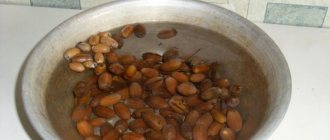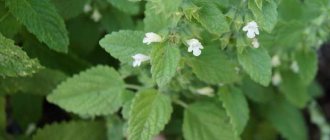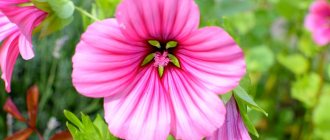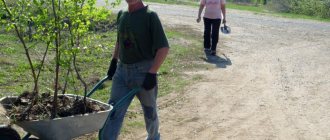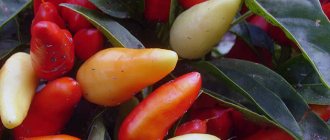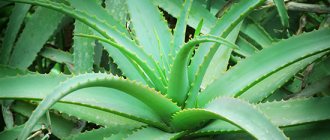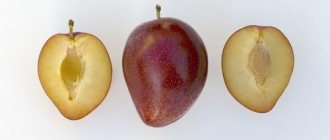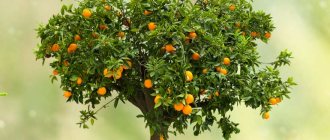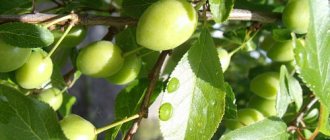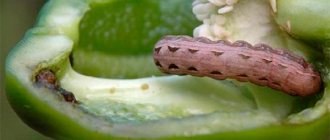Features of growth and fruiting
Plum grows as a tall shrub or tree. The crown is spreading or narrow pyramidal, the branches are drooping or straight. The ground part varies from 2 to 8 meters. It all depends on the variety, soil, and climatic conditions. Under favorable conditions, the height of some species reaches 10 meters or more.
In the first 4-6 years, intensive growth of branches is observed. Fruiting slows down the process.
In the Krasnodar region, vigorous varieties are grown: Vengerka, Renklod green, Ontario.
In central Russia, medium-sized (Washington, Vengerka azhanskaya) and low-growing (mirabelle) varieties are common. The crown area of the latter is up to 40 square meters. m.
The plum begins to bear fruit at 3-4 or 5-6 years. Continues to produce crops for 20 years.
Simple (growth) and mixed (leaves, flowers) buds are formed on the plum. Formed individually and in groups. Next, bouquet branches and spurs are formed from group buds. The latter form growth buds.
According to the nature of fruiting, plum varieties are divided into groups:
- Varieties that bear fruit on last year's growths. Group buds predominate on the branch. The crown shape is spreading. These include American, Chinese, Ussuri and plums. To speed up the appearance of fruits, shoot growth is supported.
- Fruiting on a two-year-old branch. The fruits are formed on spurs and bouquet branches. The lifespan of spurs is 5 years. Varieties of this type have a pyramidal crown shape (Anna Shpet, Vengerka Domashnaya, Peach).
- Mixed fruiting. Both options are present in the group. Most varieties with the 3rd fruiting group: Tula black, Hungarian Moscow, Mirnaya, Skorospelka red, Pamyat Timiryazev, Volzhskaya krasavitsa, Ochakovskaya yellow. The varieties are distinguished by high yield and early ripening.
The characteristics of fruiting are taken into account when pruning to regulate the yield.
Common varieties of plums
According to the degree of ripening, plums are divided into the following groups: very early-fruiting, early-fruiting, medium-fruiting, late-fruiting.
Very precocious
Red ball . The variety was bred by breeders by crossing Ussuri Red and American Burbank. The tree grows up to 2.5 m in height. The shape of the branches is spreading. Flowering is early, leaves appear later than buds.
The fruits are large (40 g), red in color. The taste is sweet and sour with a pronounced aroma. The peculiarity of fruiting is group 2 (on spurs). The harvest is harvested 2-3 years after planting.
Sapa . The dwarf plant reaches a height of up to 1.5 m. The variety is obtained from crossing cherries and plums. It is a bush. The fruits grow on annual growths. Up to 6 flower buds are formed in the leaf axils. Therefore, the variety pleases with a bountiful harvest.
Fruiting occurs in the second year after budding. In the 3rd year of fruiting, Sapa produces a harvest of up to 4 kg. Growth is regulated by systematic pruning. The fruits are small - 9-10 g. The dark burgundy pulp is used for coloring marmalade and wine. The taste is reminiscent of thorns.
Breeders use Sapa for crossing peaches and apricots.
Opata . Dwarf tree up to 2 m in height. The product of crossing plum and cherry. The fruits are used for technical purposes.
Precocious
Manchurian beauty . The variety is a derivative of 3 varieties: Chinese, Ussuri, “Simon”. Growth reaches up to 1.8 m. The plant belongs to self-sterile plants. A pollinator is planted next to it. The Ussuri plum performs this role well.
Regular fruiting begins 3 years after planting. Ripening period August – September. The mass of yellow-orange fruits is 15 g. Fruiting fruits are formed on bouquet branches.
After ripening, all the fruits must be collected. Otherwise, the plum will throw them off the tree.
Spark . Medium-sized tree with high yield. The fruits are ovoid, weighing 18 g. The color is dark red with a bloom.
Egg yellow . The trees bear fruit in 6-7 years. Productivity is high. The fruits are large. The shape is ovoid in orange-yellow hue.
Medium-fruited
Peach . Plum prefers southern regions due to poor winter hardiness. Fruiting on bouquet branches appears in 5-7 years. Over time, the tree's productivity increases. At 25 years old, a peach plum bears fruit up to 50 kg per unit. The weight of one berry varies from 45 to 50 g.
The color of plums changes depending on the weather. In cold weather - greenish-yellow color, in sunny, warm weather - a pink blush covers almost the entire fruit.
Victoria . Plum is a self-fertile variety of English origin. Can be a pollinator of Anna Shpet, Vengerka, Kirke varieties. The trees are large with a spreading crown. They bear fruit for 3-4 years.
The fruits are reddish-yellow, light purple on the sunny side. There is a waxy coating. Fruit weight 40-45 g. Loves moist, fertile soils with the presence of lime.
Italian . The homeland of the variety is Italy. The tree is not frost-resistant. They prefer southern regions. Under favorable conditions, at the age of 5-6 years, the yield of Italian is 50 kg. In a 10-year-old - 100.
Hungarian . The tree is tall with a spreading crown, pyramidal in shape. Frost-resistant variety, resistant to diseases. On moist fertile soils the yield is 150-180 kg.
Renklod . The tall plant reaches up to 5-7 m in length. The crown is rounded. The fruits are black-blueberry in color with a waxy coating.
Late-fertile
Washington . The tree is partially self-fertile and medium in size. The pollinator can be Anna Shpet, Peach plum. The crown is spherical. Leaves appear after flowering. Good fruiting occurs in 7-8 years. The fruits are light yellow and large.
In regions with a humid climate or rainy summers, fruit rot affects Washington. Wet weather affects taste.
Renclaude Ullens . The tree is vigorous. It begins to bear fruit at the age of 5-6 years. Productivity is high. Prefers the climate of the southern regions. The fruits are green and acquire a yellow tint when fully ripe. The pulp is juicy and sweet.
Timing of planting work
The timing of plum planting varies depending on the variety and region of growth. Many gardeners rely on the dates indicated in the lunar calendar.
Depending on the variety
The varietal variety of plums is divided into: early-ripening, mid-ripening and late-ripening. Each species has its own ripening time and favorable period for transferring to open ground. Early plums ripen in 70-90 days, medium ones in 90-100 days, and late plums in 100-120 days. The first two subspecies of plum can be planted in spring and autumn; they quickly take root and begin to bear fruit 2-4 years after planting. It is preferable to plant late varieties in early spring so that they have time to get stronger by the beginning of winter. They begin to bear fruit in the 6-7th year of the growing season.
From growing region
In the south, plums are planted at any time. Winters in this region are warm, and young trees can easily withstand light frosts. Planting is carried out in spring or summer, as well as in autumn, but before the beginning of October.
In central Russia and the north, it is recommended to plant plums in the spring. If this opportunity does not arise, then the young tree is covered with earth for the winter and covered with insulation. At the beginning of the next season they are moved to a new place.
According to the lunar calendar
Many gardeners prefer to carry out work based on the dates marked in the lunar calendar. For each year, the numbers and values change. In 2021, it is recommended to plant plums:
- April: 1-3, 8-12;
- May: 1-3, 7-10;
- June: 4-7, 14-17, 20-23;
- July: 5-9, 12-13;
- August: 2-6, 16-17;
- September: 5-6, 8-9, 21-25, 29;
- October: 2-5, 10-11, 15-16, 22-26.
Choosing planting material
When choosing planting material, take into account varieties that are adapted to the conditions of a particular region.
Trees are divided into self-fertile and self-sterile varieties. If you choose the second option, then you need to take care of purchasing pollinating varieties.
When buying a seedling, pay attention to the appearance:
- the root system must be healthy, without dried out parts;
- It is mandatory to have a tag containing information about the manufacturer and the characteristics of the variety;
- seedlings with an open system should not have signs of disease, spots, damage, roots of a light shade;
- annual seedlings should be 1-1.3 m in height; those grown from seed should be 1.5 m. Deviation from the norms indicates improper care and violation of cultivation technology.
Experienced gardeners advise choosing two-year-old seedlings. They quickly take root and tolerate stress more easily than older specimens.
For spring planting, seedlings are purchased in the fall and dug into the ground at an angle of 60 degrees. to a depth of 40 cm.
Errors during landing
Inexperienced gardeners may do the work incorrectly, which leads to poor growth or even death of the plum tree. The easiest way is to study them, this will help you not make mistakes and ensure good survival of the tree:
- Shading or planting in an area with high groundwater levels.
- Deepening the root collar.
- Severe damage to roots during transplantation.
- Carrying out work after the buds have opened.
If damaged roots are found, it is better to remove them and treat all sections with a solution of potassium permanganate. If there are scratches on the bark, spray them with a solution of copper sulfate or cover them with garden varnish.
You may be interested in:
How to plant a plum tree in the fall: a step-by-step guide The plum tree reaches a height of up to 13-15...Read more...
Planting a plum in the spring is not difficult if you know the features of the process and purchase high-quality seedlings. Planting and care in the first year are very important; it determines whether the plant will survive the winter and how quickly it will grow.
Choosing soil for planting
The composition of the soil is chosen according to the variety. Clay soils are suitable for oval-shaped fruits; loamy chernozem is suitable for round ones. Plums can grow on dry sandy loam soils if the soil is well fertilized beforehand. To do this, humus is added to the soil in the spring.
Plum is capriciously related to acidic soils. Increased acidity is determined visually. The indicator will be plants: sorrel, heather, mint, plantain. The level can be lowered by liming, adding ash, and dolomite flour.
Groundwater should lie at a distance of 1.5 m, not higher.
Best planting season: spring or autumn?
In order for the young tree to successfully survive the winter and enter the active growing season by spring, agronomists recommend planting plum seedlings in the spring. But, as we understand, spring is a general concept that lasts three months. But when is it right to plant a tree in the ground?
Attention. The ideal time for planting in spring is March or the first ten days of April. If you still decide to plant a plum in the fall, then prefer September.
Speaking about the advantages of autumn planting, it should be noted that there is a huge range of varieties.
But the lack of this season fully covers the varietal diversity. The fact is that not everyone can properly take care of the safety of a young tree in winter, and many gardeners simply die.
If we talk about the advantages of spring planting, they are as follows:
- good rooting in the summer season;
- increasing the immune strength of the cuttings;
- a complete set of nutrients and minerals from the soil.
The disadvantage of spring replanting in the ground is insignificant and lies only in not being late with planting. As a rule, many people plant seedlings with buds already in bloom, thinking that this way they will take root faster. In fact, trees that have begun to flow sap are weak and most often die.
It is important not to miss the planting date in the spring and do it before the sap starts flowing. Plum is an early crop, and this must be taken into account.
Autumn and spring planting of plums
Plums are planted in autumn and spring. In the southern regions it is preferable to plant in the fall, in the middle zone - in the spring.
The signal for planting in spring is completely thawed soil. The work must be completed within two weeks. Preparation of the planting site begins in the fall. The width of the pit is 70-80 cm, depth 40-50.
For poor loam, the size is chosen larger (width 2 m, depth - 1). The bottom is covered with a layer of clay (5-10 cm) and the earth is compacted. On top is a fertile layer with fertilizers.
Autumn planting should be carried out 1.5-2 months before stable frosts. During this period, the plum has time to take root. The landing site is prepared 15 days before planting. In the autumn, fertile soil with humus (1 bucket), superphosphate (350 g), and potassium salt (65 g) are added to the pit. Dense soil is mixed with sand.
Fertilizers containing nitrogen are not used in the fall. Nitrogen stimulates growth.
Preparing the landing site
This stage should be carried out long before the main part. At a minimum - in the fall, if you plant a plum in the spring and, vice versa, when planting at the end of the season. Many people prepare a pit a year in advance; experts recommend this option. The process consists of several important steps.
Where to place
You can’t plant a plum just anywhere; it can grow normally and bear fruit only under favorable conditions. Choose a place in advance, free it from bushes, weeds and debris. Comply with the requirements of this plant:
- Good illumination of the area. In the shade, the tree develops poorly, the trunk is bent, the branches are deformed. Shading is allowed, but not more than a few hours a day.
- The distance to the fence and buildings is at least 3 meters. This is necessary for normal tree growth, crown ventilation, and ease of maintenance.
- The place should be protected from cold winds and drafts. Plum grows and bears fruit poorly in such conditions.
- The depth of groundwater is no less than 1.5 m. If the water is closer, the surface root system will begin to rot over time.
- Choose places on small hills. The tree should not be flooded with melt water in the spring.
- Make the distance between trees according to the crown size and height. For medium-sized plants, the minimum value is 2 m, for tall plants – 3 m or more. When planting a garden between the rows, make a gap of 4 or 5 meters, respectively, and plant strictly according to the scheme.
- Do not plant next to plants that create competition for food and have a similar root system. These include: raspberries, sea buckthorn, cherries and cherries, currants, peach, pear, walnut, sea buckthorn. The best neighbors are apple trees and other varieties of plums.
Don't forget about the need for pollination. The neighboring tree must be within a radius of 30 meters. Often they use a paired planting option, when they select 2 varieties (from the zoned ones, it is advisable to look at photos of the fruits, to understand which plums will grow) and place them close to each other.
Prepare the pit correctly
For trees, light, breathable soil is best. If the soil is poor or there is a lot of clay in it, it’s not a big deal; with proper preparation, the plum tree will grow in ideal conditions. Carry out the work six months to a year in advance, prepare the pit:
- In the selected area, dig a hole with a diameter of 70 cm to a meter and a depth of approximately 70-80 cm. The shape does not matter, the main thing is to remove the soil.
- If the acidity of the soil is increased, add dolomite flour. It will lower the pH level and serve as an additional fertilizer. You just need to evenly distribute the composition along the bottom of the previously dug hole.
- If there is a danger of flooding with groundwater in the spring, it is advisable to make drainage at the bottom. To do this, deepen the hole 20 cm and add a layer of broken bricks or small stones.
- Prepare a nutrient mixture. To do this, mix compost or rotted manure with peat in equal parts, add black soil (about a third of the total volume). Add 75 potassium sulfate and urea, as well as 25 g of superphosphate. The second option for saturating with nutrients is to add 2 cups of nitrophoska and 2-3 liters of wood ash.
- Fill the hole to ¾ of the volume with the compound. Distribute evenly, compact with feet or a log. Sprinkle garden soil on top and make a small mound, since the surface will sag in any case. If after a month a hole forms in the prepared area, add more earth so that there is no depression.
Advice!
If the hole was prepared in a field or in a place where it would be difficult to find it later, it is better to drive a stick in the middle as a mark.
Even in a fertile area, it is worth preparing a hole to create ideal conditions for the survival and growth of a young tree. It must be arranged in advance so that the ground shrinks and the tree does not deepen.
You may be interested in:
Incomparably delicious spicy plum for the winter with cinnamon Spiced plum with cinnamon is an excellent preparation...Read more...
How to prepare a hill for planting
If the groundwater in the area is shallow or there is a danger of flooding in the spring, it is better to prepare an elevation in which it is convenient to plant plums in the spring. This option can be used when the garden is located on the northern or eastern side of a slope, as well as in places with very heavy and dense soil. Carry out work like this:
- Mark a circle with a diameter of approximately 2 meters. First, carefully remove the turf from the entire area so that grass and weeds do not sprout later. It is best to go deeper by about 30 cm, remove all the removed soil, it will not be needed.
- Prepare a nutrient mixture of humus, peat and black soil in equal proportions. Add 3 liters of ash and 200 g of nitrophoska to saturate it with nutrients.
- Pour a layer at least 80 cm thick. You will get a hill that may shrink quite strongly over time; in this case, add more soil so that the hill after shrinkage is 40 to 50 cm high.
If there is a danger of the hill collapsing, it can be strengthened by placing boards around the perimeter or by covering the surface with grass. Sodding will make the hill much stronger. Further work is done in the same way; there is no particular difference where to place the tree.
Seedling care
After planting, seedlings require tree trunk care, watering, mulching, fertilizing, and pruning.
Taking care of the trunk circle
A radius of 1 meter from the seedling is called the trunk circle. After planting the plum, special attention is paid to it:
- remove weeds in a timely manner;
- regularly loosen the soil;
- remove root shoots up to 4-5 times during the growing season;
- the garden is older than 2 years, herbicides are applied to the tree trunk. Work is carried out in calm weather. At the same time, do not allow the herbicide to get on the foliage or trunk. Solution consumption 20 g per 1 sq. m.
Watering and mulching
The plant receives its first watering during planting (2 buckets). Water absorbs moisture and compacts the soil.
Next, water once a week during the summer. It is better to carry out irrigation with a rain installation (2 hours) so as not to erode the fertile layer of the tree trunk circle. Or from a watering can, 20-30 liters of water for one tree.
In dry summers, watering is done more often, in rainy summers - less often.
In the second year of the seedling's life, irrigation is reduced. Watering is carried out as needed: heat, lack of rain.
Herbicides will not be required if the tree trunk circle is mulched after watering. Sawdust, straw, pine branches, and peat are used as mulch. Mulching will retain moisture and protect against weeds.
It is very important to saturate the soil with moisture in the fall. When the trees have not yet shed their leaves. Water every day for 7 days.
Plums get a lot of benefits from sprinkling. Young seedlings are sprayed in hot weather and in autumn. In summer, procedures are carried out in the evening. Autumn sprinkling of young trees without leaves will help combat sudden temperature changes. Sprinkling begins in the evening and continues until dawn.
Plum feeding
The fertilizer that the seedlings received during planting lasts for 2 years. In subsequent years, the tree will require mineral and organic fertilizers.
In the third year, the plum is fed with urea (20 g) with the addition of urea (2 tablespoons), per 5 liters. water. In the first ten days of May, foliar fertilizing with a working solution is carried out.
At the beginning of June, nitrophoska is introduced. Dose: 30 g of the drug per 10 l. water. Foliar feeding.
In mid-August, use superphosphate (2 tablespoons), potassium sulfate (2 tablespoons) per bucket of water.
Root feeding is carried out in August:
- 15 g potassium sulfate;
- 15 g superphosphate;
- 70 g ash;
- 10 liters of water.
Step back 80 cm from the trunk and make holes into which the solution will be poured. Fertilizing is combined with watering (25 liters of water for each plant).
The following are used as organics:
- dry chicken droppings. Dose: 1 kg per 3-4 liters of water. The mixture is left to ferment for 2 days. Before watering, dilute in a ratio of 1/10 l. water and mix thoroughly;
- humus.
Organic fertilizers are applied once every 3-4 years.
Pest and disease control
Spraying and treatment are carried out for the purpose of prevention and control of pests or diseases. Along with pruning, preventive treatment of the tree is carried out with urea and a solution of Ecoberin or Zircon in order to destroy pests, pathogens and increase immunity to them and temperature changes.
Plum trees are susceptible to smallpox, moniliosis, clasterosporium blight, aphids, and other pests and diseases. The sooner measures are taken to combat them, the easier the disease will progress, even if it cannot be avoided. In addition to pests and diseases, we should not forget about weed control. To do this, just loosen the soil around the trunk.
Pruning plums
The plum is formed by pruning. The tree must be healthy. Then pruning and shaping the crown will lead to positive results. When pruning, it is worth considering the characteristics of fruiting.
Pruning a young plum
In the first year, the seedlings should be one meter high, the remaining length is cut off. The standard is formed up to 70 cm in height for an expanded crown, pyramidal - 50.
In the second year, the seedling has 6-7 skeletal branches on the central conductor. 4 skeletal branches of the first order are formed, which are cut in half, the rest are removed. The stem is shortened by one bud from the growth. Below the skeletal branches, new shoots will stretch out on the trunk. They are reduced by 10 cm. They are left so that the standard increases its thickness.
The third year of the seedling. The stem is completely freed from side shoots along the base. Last year's growth is cut by half. Branches of the second order are formed on skeletal branches. Of these, 8-9 external branches are formed.
Further, skeletal branches are not pruned. Shoots growing inside the crown, dry and damaged, are removed. Annual shoots are not pruned if they are less than 70 cm. If they are larger, they are shortened by a third.
Crown formation
Crown formation can be done at any time, but early spring is considered the best period.
Over the course of 4-5 years, a sparsely tiered crown is formed:
In the first year, the crown of the conductor is cut off. The trunk must have no side branches.
Next year, 5-6 branches will grow on the trunk. You only need to leave three branches, the central conductor. They will be the first tier of the crown. The distance from the root collar to the branches is 60 cm. At this step, the trunk should be without shoots. Skeletal branches are shortened to a bud that faces outward. It is desirable that between each branch a height step of 15 cm is maintained and directed in different directions from the conductor.
In the third year, growth will appear on the skeletal branches. We leave one shoot of growth on the skeletal branch. You should choose those that are directed to the outside. The remaining growths are shortened to the bud. The conductor is shortened to a height of one meter.
In the fourth year, it is necessary to continue the formation of skeletal branches - leave one growth, remove the rest. Growths are always trimmed to a bud directed towards the outside.
The second and third tier are formed using the same principle. A spacing of 60 cm is maintained between tiers. Competitors cut branches into a “ring”. That is, without stumps, and the cut areas are treated with garden varnish.
Strengthening fruit branches with supports
High harvests of plums can break branches. To prevent this from happening, props are prepared. They should be located at the center of gravity of the branches. Insulate the contact area with soft material: rags, grass, rubber. First, grooves for skeletal branches are made in the upper part of the support. This will prevent damage to the bark, and there will be no gum (resin) leakage.
How to choose a good seedling
It is necessary to take into account two groups of factors: varietal characteristics and fruiting characteristics, as well as the condition of the plant. If you buy a sick or severely damaged tree, even if agricultural practices and ideal growth conditions are followed, it will not take root. The most significant features are:
- Harvest time. It varies from July to October, it should be selected according to the region; if the summer is not very hot, and the cold period can come early, it is better to use early or mid-season varieties. Options with a long growing season are good for the southern regions.
- Sizes and characteristics of fruits. They differ in color, size, and taste. Some options are selected for fresh consumption, and others for preparations.
- Is the variety zoned in the region? Choose only those varieties that grow normally in the region, withstand climatic conditions and bear fruit without problems. If you buy a non-zoned option, there is a high risk that the plant will not take root.
- Frost resistance. One of the most important nuances, since if the tree is heat-loving, it will die after the first winter. Be sure to clarify the temperature limits that are permissible for plums. Ideally, there should be a reserve so that the seedling can withstand the winter without problems.
- Pollination conditions. Most often, a tree requires a pollinator nearby for normal fruiting. If there is another plum on the site or the neighbors have, that will be enough. But if there is no tree nearby, you will have to plant at least two copies, and different varieties.
Advice!
If there is not enough space for two seedlings, there is an option to graft 2-3 varieties onto one rootstock. The work is not easy, it is better to ask an experienced gardener for help. After determining the appropriate variety, you need to choose a strong seedling so that it takes root normally and immediately begins to grow. This is easy to do if you know the basic nuances and follow the recommendations:
- Type of root system. It can be open or closed, the first option is much cheaper, and the second is sold in a container with soil, so it takes root better, it is recommended for beginners. The closed variety is also good because it is less damaged during transportation, although it weighs more.
- Condition of the roots. In the open version, it is easy to inspect this part; the main shoots should be strong and elastic, with numerous branches, without damage, dry areas and dark spots of rot. Nothing is visible in the containers, here it is worth paying attention to the bottom, there should not be many shoots sticking out there, and to the soil on top - if it is very wet and damp, there may be rot inside.
- The trunk should not be crooked or deformed, and the presence of branches in the lower part is not allowed. From the root collar to the grafting point, the optimal distance is from 7 to 10 cm. The minimum thickness is from 1 cm, the height is usually about a meter; if the seedling is long and thin, this indicates that it was grown in unfavorable conditions.
- The buds should not be open. It is recommended to plant during the period when the tree is dormant, so the presence of swollen buds, and even more so leaves, is undesirable. The tree will use all its resources to form the above-ground part, which is why it will not take root well and may die in the first winter.
Buy in stores or directly at variety testing stations, where the option you like will be dug out of the ground before your eyes. In markets, identical trees are often sold under the guise of different varieties, plus there is no guarantee that the grafting was done well.
By the way, plums can be used to make a very tasty filling for pies.
You may be interested in:
Delicious pickled plums for the winter without sterilization, like mom’s. Pickled plums are an excellent preparation for...Read more...
Plum propagation
Self-rooted plums are propagated by root cuttings and shoots; grafted plums are propagated by green cuttings and graftings.
Beginning gardeners should start with simple methods of propagation - shoots.
We propagate by root suckers
Shoots appear near the trunk. They are usually removed, but can be used for propagation:
- In early spring, away from the trunk (1 m), a shoot is separated, 50 cm high, with a well-developed root system. From the stem of the growth, the root cutting step is 20 cm. The cut site is treated with ash.
- The seating location is chosen in the shade.
- The top is pinched after planting.
- The sign of rooting of the shoot will be the appearance of leaves.
- After 30 days, the seedling is fed with organic matter and mineral fertilizers. Fertilize regularly once every two weeks so that the seedling gets stronger.
Graft
Reproduction by grafting preserves maternal characteristics:
- The rootstock (base) is grown from shoots or seeds. Ideal age 1 year.
- A bud of a varietal tree is used as a scion. The method of grafting with a bud is called budding.
- The rootstock is watered abundantly so that the bark separates well and sap flow increases, and on the day of grafting the trunk is wiped with a damp cloth to remove dust.
- A strip with a bud (3 x 0.5 cm) is inserted onto the trunk of the rootstock. To do this, step 4 cm away from the ground and make an incision in the bark. Carefully bend the bark and insert the shield with the bud. Wrap the budding site with cellophane. The kidney remains open.
- After 20 days, the bandage is removed.
Root cuttings
- They retreat 1-1.5 meters from the trunk and dig up the root system.
- Roots with a thickness of 0.5-1.5 cm are selected and cut into (15 cm) cuttings.
- The beds are prepared, where the roots are planted at an angle, in increments of 10 cm.
- Plantings are covered with agrofibre. The material will protect from sunlight and create a favorable microclimate for cuttings. New shoots will appear in a month.
- The strongest specimens are selected and grown.
- After 2 years, finished seedlings are transplanted to a permanent place.
- Further care is carried out as for young seedlings - fertilizing with organic matter and mineral fertilizers 2 times a week.
- Autumn preparations are sent to boxes with sand and placed in the basement. In spring they are planted in open ground. Storage temperature 0-2 degrees.
How to plant a plum from a seed
Plum trees are propagated from seeds. Varieties suitable for this method: Chinese, Ussuri, Canadian Far Eastern.
Algorithm of actions:
- A ripe fruit is selected. Varieties grown in similar climates are ideal for propagation.
- The bone is freed from pulp and washed under running water. Placed on the windowsill to dry.
- As soon as the nut dries, separate the seed from the shell so that it remains intact.
- A bowl of water will help you check viability. The sunken seed is suitable for germination.
- Planting material undergoes stratification in the refrigerator at a temperature of 4 degrees C.
- The seed is stored in damp sawdust.
- As soon as the seed hatches, the planting material is planted in a pot.
- Care is carried out as for a houseplant.
- In autumn, the seedling is planted in open ground.
- Planting should be done 1.5 months before stable frosts. After wintering, the seedling is transplanted to a permanent place.
Preparing plums for winter
Young plum seedlings do not tolerate cold weather well, so special attention must be paid to preparing the trees for winter. First of all, you should carefully dig up the soil to saturate it with oxygen. Then take care of the crown - tie it to a stable stake, and collect the branches themselves into a single broom. This is necessary to protect young branches from strong winds, which can be very gusty in winter. If the plum was planted in the spring, it needs to be buried under the snow. If the tree is older, it is still recommended to wrap its trunk with snow and also cover it with additional hay. If the plum tree has grown and has many branches, they all need to be strengthened with pegs. Such support will support young branches and prevent them from breaking under the weight of snow.
Article Rating
They bloom but do not bear fruit
Beginning gardeners are faced with the fact that the plum blossoms beautifully, but does not bear fruit.
Self-sterile plums cannot bear fruit without a pollinator. For such purposes, pollinating plums are planted. Each variety has its own pollinator, but if for some reason you do not know the pollinator of your variety, you should follow some rules when choosing:
- tree with annual flowering;
- the life expectancy with the main variety is the same;
- There is plenty of benign pollen.
Among the self-fertile varieties, the following varieties are distinguished:
- Early blue.
- Memory of Timiryazev.
- Common Hungarian.
- Spark.
- Red early ripening.
- Hungarian homemade.
- Hungarian Moscow.
Trees are planted within 60 meters.
Other reasons:
- The ovaries are destroyed by pests.
- Insufficient fertilizing in autumn. Fertilizers during this period are responsible for future fruiting.
- The trees did not have enough moisture.
- The region does not correspond to this variety.
- Soil with high acidity. Does not like trees or swampy places.
- Incorrect agricultural technology when planting. When planting, the root collar is buried and the tree becomes sick. The tree spends all its energy on restoration and fruiting does not occur.
- Plum age.
What to consider depending on the season
Each season has its own characteristics for caring for crops. You need to know how to properly care for different periods of the growing season.
Spring care
At the beginning of spring, formative pruning is carried out, the tree is watered with 3-6 buckets of water. Nitrogen and phosphorus fertilizers are applied. Dig up the soil near the tree trunk. In the spring, before flowering begins, plums are treated with insecticides and fungicides for prevention.
Summer
In summer, it is necessary to actively water the plant, this improves fruit filling. In July, during the fruiting period, fertilize and increase the amount of water. Plum ripening occurs in August or September. Two weeks before harvesting, watering is completely removed.
Autumn
After harvesting, sanitary pruning is carried out. Be sure to water the plum tree abundantly before winter, then fertilize it with organic matter and mulch the tree trunk.
